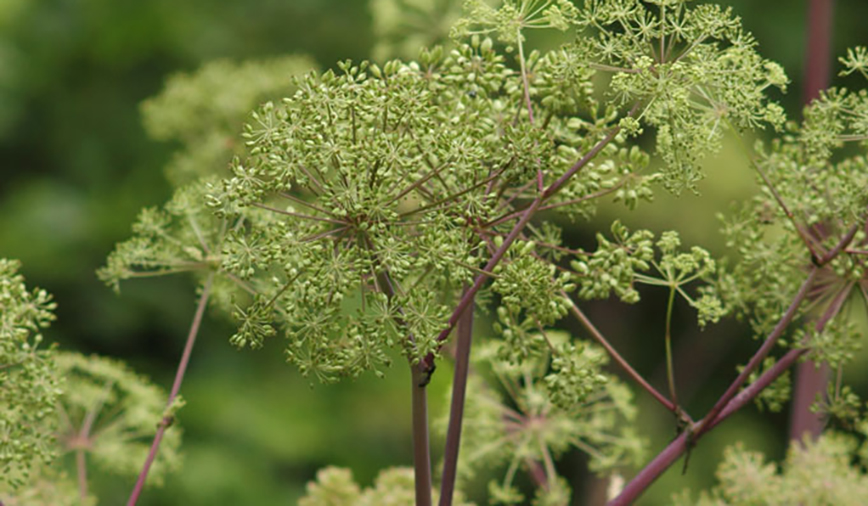February 27, 2015
Bird Tracks
Large, green globes of flowers and thick purple stems make great angelica easy to identify. According to the late, great naturalist Dick Young, “The broad, pinnately compound, toothed leaves and large, rounded blossom umbels give angelica an ethereal, hazy, lazy cast…Its angel name fits.”
Holy great angelica, Batman!
Over the past few weeks I’ve gotten a number of requests for identification of a large—no, make that huge—plant dominating the landscape in select areas throughout Kane County.
Although the emails had different authors, the gist of each question was the same: What the heck is this enormous, purple-stemmed plant with the globes of green flowers?
One of the many reasons I love great angelica, Anglica atropurpurea, is that, just as robins are unmistakable birds and white-tailed deer are unmistakable mammals, this behemoth, when in bloom, is an unmistakable member of local wetland communities.
The smooth, purple stem, alluded to in the scientific name, is one giveaway; the rounded umbels (think umbrellas) of flowers bursting forth like so many late-June fireworks is another.
That people are inquiring about this plant is, to me, an advocate for all our local, natural treasures, great news. But what really makes me smile is that their inquiries mean these folks are outside enjoying our area’s many fine wetlands. For great angelica doesn’t grow just anywhere.
As Dick Young pointed out in his book Kane County Wild Plants & Natural Areas, great angelica is somewhat uncommon, preferring wet areas fed by springs. Provide those conditions, along with plentiful sunshine, and look out-this stunning member of the parsley family can grow to heights of 8 to 10 ft.
Angelica’s heavenly name can be traced back to its European cousins—other species of the same genus. Those angelicas were alleged to have near-magical curative powers. John Gerard, a noted 16th Century botanist and herbalist, wrote that angelica “cureth the bitings of mad dogs and all other venomous beasts.”
Other practitioners credited the plant with curing anything from fever and ague to poisoning, as well as suffering brought on by evil spells and hexes. In fact, according to one legend, the name “angelica” is derived from an incident long ago where an angel appeared in a dream and revealed that the plant would cure plague.
I don’t know about that, and thank goodness we don’t need to. But our native angelica does have another fine quality besides its beauty. Mr. Young mentions that the hollow stems, once dried to remove the plant’s acrid juices, can be carved into flutes and whistles.
Like all things beautiful, great angelica will fade-sooner rather than later. You can still catch a glimpse of its grandeur in select high-grade wetlands throughout Kane County—as well as in the rain garden in front of the Hickory Knolls Discovery Center. Although the flowers have begun to turn to seed, our angelica still can be seen towering over its wildflower neighbors. With no mad dogs or other venomous beasts (save for a few bees and native spiders) in sight.
Pam Erickson Otto is the manager of nature programs and interpretive services at the Hickory Knolls Discovery Center, a facility of the St. Charles Park District. She can be reached at 630-513-4346 or potto@stcparks.org.

